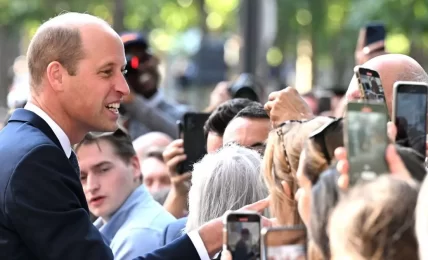Temperatures in the famously sizzling Death Valley national park are predicted to equal or even break modern records this weekend – but that hasn’t stopped the tourists from showing up.
The US south-west is currently trapped under an unrelenting heatwave, with extreme temperatures forecast to climb even higher in the coming days. In the national park, the thermometer could climb past 130F (54.4C).
But that probably won’t deter some willing to brave the heat.
Daniel Jusehus snapped a photo earlier this week of a famed thermometer outside the aptly named Furnace Creek Visitor Center after challenging himself to a run in the sweltering heat.
“I was really noticing, you know, I didn’t feel so hot, but my body was working really hard to cool myself,” said Jusehus, an active runner who was visiting from Germany. His photo showed the thermometer reading at 120F (48.8C).
Most visitors at this time of year make it only a short distance to any site in the park – which bills itself as the lowest, hottest and driest place on Earth – before returning to the sanctuary of an air-conditioned vehicle.
Signs at hiking trails advise against venturing out after 10am, though nighttime temperatures are still expected to be over 90F. The hottest temperature ever recorded at Death Valley was 134F (56.6C) in July 1913, according to the park service, although measuring equipment was less precise a century ago and the modern record was set in 2021 when the park hit 130F.
Other parks have longstanding warnings for hikers. At Grand Canyon national park in Arizona, officials are cautioning people to stay off the trails for most of the day in the inner canyon, where temperatures can be 20 degrees hotter than the rim. In west Texas, Big Bend national park near the Rio Grande is expected to be at least 110F.
Preliminary information from the park service shows at least four people have died this year from heat-related causes across the 424 national park sites. That includes a 65-year-old man from San Diego who was found dead in his vehicle at Death Valley earlier this month, according to a news release.
More than 1.1 million people annually visit the desert park, which sits over a portion of the California-Nevada border west of Las Vegas. At 5,346 square miles (13,848 square kilometers), it is the largest national park in the Lower 48. About one-fifth of the visitors come in June, July and August.
Many are tempted to explore, even after the suggested cutoff times. Physical activity can make the heat even more unbearable and leave people feeling exhausted. Sunbaked rocks, sand and soil still radiate after sunset.
“It does feel like the sun has gone through your skin and is getting into your bones,” said park Ranger Nichole Andler.
Others mentioned feeling their eyes drying out from the hot wind sweeping through the valley.
“It’s very hot. I mean, especially when there’s a breeze, you would think that maybe that would give you some slight relief from the heat, but it just really does feel like an air blow dryer just going back in your face,” said Alessia Dempster, who was visiting from Edinburgh, Scotland.
Death Valley is a narrow desert basin that, at its lowest point, is 86m (262ft) below sea level; but it is situated among high, steep mountain ranges, according to the park service’s website. The bone-dry air and meager plant coverage allows sunlight to heat the desert surface. The rocks and the soil emit all that heat in turn, which then becomes trapped in the depths of the valley.
Multiple people died in the park in 2021, including from heatstroke, during a record summer. Last year, a 67-year-old man died while walking two miles from his car to a gas station during a heatwave. The temperature then was 123F.
The park’s brownish hills feature signage saying “heat kills” and other messaging, such as a Stovepipe Wells sign warning travelers of the “Savage Summer Sun”.
Still, there are several awe-inspiring sites that draw tourists. Badwater Basin, made up of salt flats, is considered the lowest point in all of North America. The eye-opening 600ft Ubehebe Crater dates back over 2,000 years. And Zabriskie Point is a prime sunrise viewing spot.
The park’s extremes have long drawn in those attracted to extremes. The annual Badwater Basin ultramarathon, held in early July, sees runners cross the valley floor at the height of summer.
Josh Miller, a visitor from Indianapolis who has been to 20 national parks so far, shared that sentiment.
“It’s hot, but the scenery is awesome,” he said.


